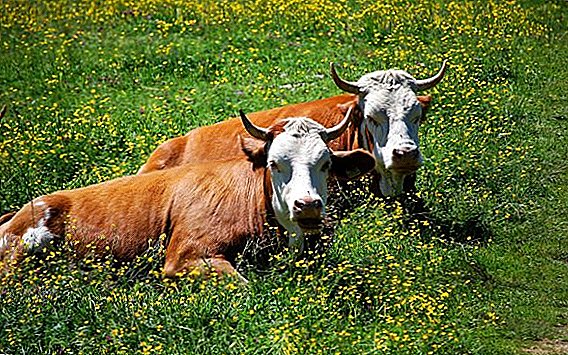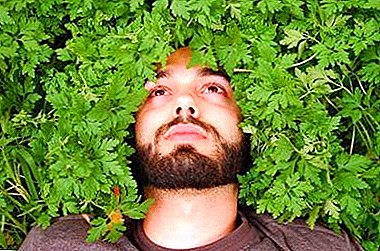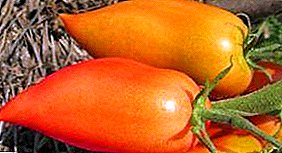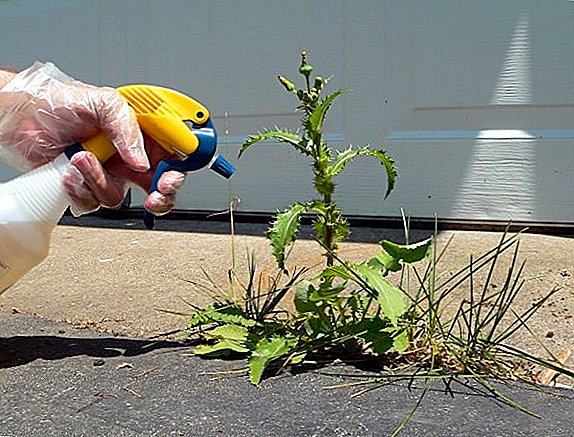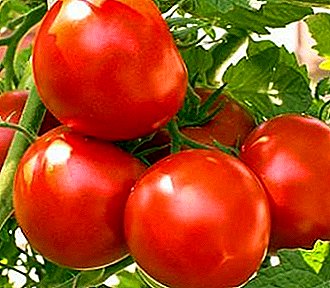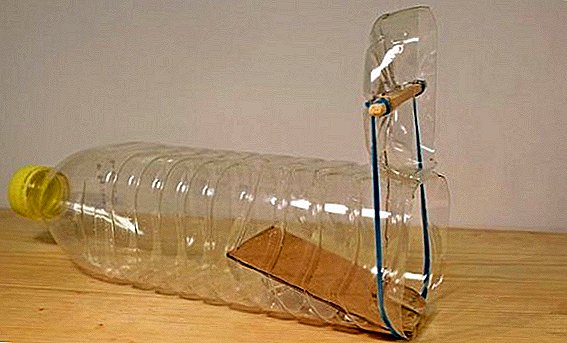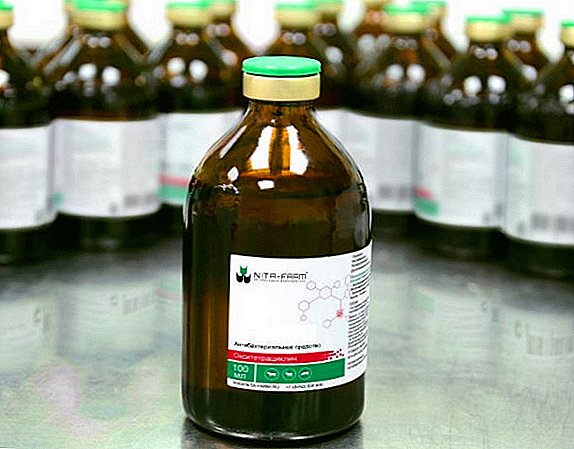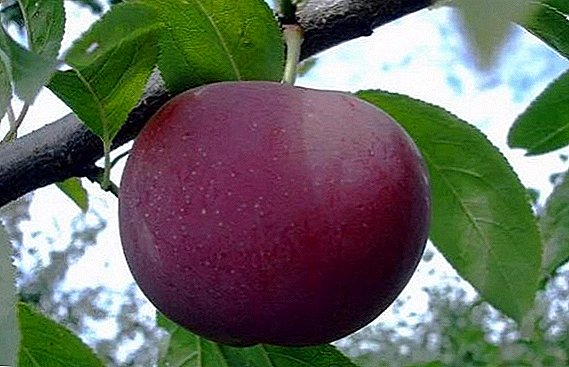 What just do not come up with the breeders to improve the characteristics of a particular variety of fruit trees. But the most common option - growing a hybrid from several "parent" trees. Sometimes, from such a crossing, very interesting specimens are obtained, which include sharafuga (its description is presented below).
What just do not come up with the breeders to improve the characteristics of a particular variety of fruit trees. But the most common option - growing a hybrid from several "parent" trees. Sometimes, from such a crossing, very interesting specimens are obtained, which include sharafuga (its description is presented below).
What is sharafuga
Sharafuga dubbed the hybrid of apricot, plum and peachwhich, despite its southern origin, has a fairly high level of frost resistance. Externally, the tree in many ways resembles the usual plum with purple fruits, characteristic leaves and thorns.
The hybrid is a plant obtained from the crossing of representatives of different varieties. For example, yoshta is a hybrid of black currant and gooseberry, and ezhemalina is a crossed blackberry and raspberry.
 However, some other characteristics bring it closer to apricot: for example, it corresponds to the shape and size of the fruit. The pulp combines flavors and plums and apricots and is easily separated from the stone, on which, by the way, the “peach” pattern is clearly visible.
However, some other characteristics bring it closer to apricot: for example, it corresponds to the shape and size of the fruit. The pulp combines flavors and plums and apricots and is easily separated from the stone, on which, by the way, the “peach” pattern is clearly visible.
Did you know? In a well-ripened fruit, the taste of apricot is more pronounced than the taste of plum, while in non-ripened specimens - the opposite is true. You do not have to wait until the harvest is fully ripe, because it will be sweet anyway.Sharafugi fruits are great for making compotes, jams and jams, and the first harvest from a tree can be gathered already 3-4 years after planting on the plot.
Features of growing a hybrid of plum, peach and apricot
By and large, the plum hybrid (sharafuga) is grown almost the same way as its "parents", with all the characteristic features in planting and caring for plum, peach and apricot. Consider them in more detail.
Choosing a place on the site
It is better to plant a tree on a flat area or on a small hill, with breathable soil, not prone to the accumulation of excess moisture. Autumn planting is allowed in the southern regions, and when growing a hybrid in the middle lane, it is better to plant trees in the spring. The main thing is that the selected area is well lit by the sun's rays, was covered from gusts of cold air and its stagnation.
Soil requirements
The soil at the future place of growth of sharafuga is prepared in advance and provides for deep digging with the introduction of several buckets of compost or humus and the addition of 70 g of superphosphate together with potassium fertilizer (35 g).  In the event of a possible strong acidification of the soil, it is imperative to perform liming of the soil, with the application of about 0.3-0.5 kg of lime per 1 m².
In the event of a possible strong acidification of the soil, it is imperative to perform liming of the soil, with the application of about 0.3-0.5 kg of lime per 1 m².
Did you know? Plum is not a long-lived tree, and the average culture age is 40-60 years.
Landing features
The dimensions of the seat (pit) for a sharafuga seedling should not be less than 0.8 × 0.8, × 0.8 m, which will make it possible to add a layer of good drainage (a brick battle or small pebbles will do). At the bottom of the finished hole also need to drive a planting stake, and it should rise above the ground by at least 0.5 m.
On top of the drainage layer we fall asleep a mound of fertile soil (humus, peat and soil from the pit are mixed in equal parts) and place a seedling on it, carefully straightening all the roots.  After planting, fix the plant on the support peg and water it well. In too hot weather, the pristvolny circle is mulched with organic matter, since it is this which allows it to retain moisture and improve the soil composition for better nutrition of the sharafuga.
After planting, fix the plant on the support peg and water it well. In too hot weather, the pristvolny circle is mulched with organic matter, since it is this which allows it to retain moisture and improve the soil composition for better nutrition of the sharafuga.
Agrotechnics growing sharafugi
Features of growing this exotic tree are not much different from the usual requirements for the cultivation of plums. Both watering and soil care are almost identical, except that the mode of fertilizer has some differences.
Watering plants
Like a plum, sharafugu is best watered using a spray bottle, but if this is not possible, you can add liquid to the previously made grooves 10-15 to 15 cm deep, which should pass in a circle at a distance of half a meter from the tree trunk. Do not over fill the plant, because watering is carried out only as needed and, more often, on too hot days. Normally, about 2 to 3 buckets of water are required per square meter area. 
Important! Water should penetrate the earth to a depth of 50-60 cm, that is, to the very roots.
Top dressing
The sharafugi fertilizer can be divided into two stages, which depends on the planting season and the further growth of the tree. So, with the arrival of autumn under the hybrid it is useful to introduce organic fertilizer in the form of 2-3 buckets of humus. Organics can be supplemented with mineral compounds, for example, by adding 5 tbsp. spoons of superphosphate and 2 tablespoons of potassium sulfate, per 1 m².
With the arrival of spring, as soon as the snow melts, it is useful to perform nitrogen fertilization, for which 3 tablespoons are added to the tree trunk circle. l urea (also per 1 m²). During the summer season, sharafugu can be periodically fed with Kemira, calculating the dosage according to the instructions. 
Did you know? 100 g of fresh apricots contain only 41 kcal, that is, in one fruit - just up to 20 kcal. At the same time, dried apricots (apricot in dried form) already contains 240 kcal.
Soil care
When growing sharafugi, as, indeed, any other plant, it is very important to periodically dig up and loosen the soil. So, with the arrival of spring, if your garden is already fully planted, you can dig up the soil under a tree with a shovel or pitchfork. To protect the root system from damage follow the location of the tool plane, it should always be placed in the radial direction in relation to the stem of the plant.
The closer to the shtambu, the smaller the digging should be (enough depth of 5-10 cm), and as you move away from the trunk, you can perform a deeper loosening (already 10-15 cm). 
Important! Before digging up the soil, it is useful to scatter nitrogen fertilizers in the near-ground circle (for example, shed urea solution about 100-200 g per plant).In the summertime, if the aisles in the garden are under black steam, weeding and loosening of the soil should be performed 2-3 times a month, and with natural grass overgrowing, it will have to be mowed 5-6 times per season. By the way, it can serve as an excellent mulch. At the end of the summer or closer to the arrival of autumn, mowing is stopped and when the land is kept under the black steam, autumn plowing and digging of tree trunks are performed again.
Tree protection from pests and diseases
An integral part of the care of any crop is the treatment of plants from various diseases and pests. Despite the fact that sharafuga has sufficient resistance to them, there are moments that still need to pay attention. For example, it is prone to slight leaf curl, inherited from the peach.  Nevertheless, it is not necessary to provoke the appearance of illnesses and at the slightest sign of an attack of pests or the manifestation of diseases it is better to immediately remove the affected areas and use special preparations: fungicides and insecticides. As a preventive measure, pruning should be carried out in a timely manner and the leaves gathered under the tree should be burned.
Nevertheless, it is not necessary to provoke the appearance of illnesses and at the slightest sign of an attack of pests or the manifestation of diseases it is better to immediately remove the affected areas and use special preparations: fungicides and insecticides. As a preventive measure, pruning should be carried out in a timely manner and the leaves gathered under the tree should be burned.
Important! With a weak infection of the tree, you should not immediately turn to radical methods, since it is likely that you will be able to avoid serious consequences with the help of the popular methods - garlic infusion or onions.If you already have experience in growing fruit trees in your area, then planting and caring for sharafuga will not be difficult, because almost no special knowledge is required of you.


